- Learning time
- 30 minutes
- First play time
- 80 minutes
Rialto
Designed by: Stefan Feld
In Rialto the players are trying to get the most influence in Renaissance Venice by constructing buildings, bridges, gondolas – and, not least, getting their councilmen on the board to control the six regions of the city.
How all this is done is through a series of bidding rounds, using cards. At the start of each round (there are six rounds, one for each area on the board) several hands of six cards are dealt face-up. Players choose one set for themselves, add two extra cards (i.e. unseen by the other players) from the deck, and then discard one of their cards to leave them with a hand of seven.
The cards are made up of several suits: Doge, Gold, Building, Bridges, Gondolas, and Councilmen. Each card, when played, performs an action on your behalf: Doge cards move you up the Doge track (furthest ahead wins ties, which are very common in Rialto), Gold cards gain you gold (which can activate any buildings you’ve built), Building cards allow you to, you guessed it, construct buildings (which give you in-game advantages when activated) , Bridges get you victory points, Gondolas get more councilmen into your supply, and Councilmen get your councilmen onto the board – no benefits for this during the game, but crucial at the final count-up, where the player with most councilmen in a given area scores twice as many points as the player in second.
Everyone’s cards when played have the above effects, but the playing of cards also functions as bid, as the player playing the most during any of the rounds gets an additional benefit: extra spaces on the doge track, extra gold, placing a bridge on the board (these define the value of areas at the end of the game), placing a gondola (and a councilman), placing an extra councilman.
As well as the simple yet strategic cardplay, there are also the buildings: they have value of 1-4 which is both the cost to build them and the points they give you at the end of the game. During the game they give you benefits too: extra cards, or extra councilmen for instance. Finally there are also Joker cards that can serve as anything you like, as long as you have at least one of the card you want your joker to represent (two jokers can represent one card you don’t have any of).
Rialto is a game that rewards several plays – as with many boardgames, the first experience will involve checking the rules and kind of muddling through to an extent. But it’s not a long game, and is deceptively simple.
The guru's verdict
-
Take That!
Take That!
There's no direct combat, but players are jostling for position on the board and trying to out-think each other in the bidding.
-
Fidget Factor!
Fidget Factor!
Everyone is involved at all times - even if not bidding during a particular round, they need to watch what the other players are up to!
-
Brain Burn!
Brain Burn!
There is some juggling to do: trying to remember what cards the other players picked up (whilst bearing in mind they will have had at least two cards from the deck, so even those with a photographic memory can't be totally sure what their opponents have) and anticipating how they are going to play them... and at the same time, wondering how to make best use of your own cards! Remember the Doge track is key in Rialto: ties for everything are decided by positions on it.
-
Again Again!
Again Again!
For adults and older children, Rialto really rewards with familiarity, but within its framework different strategies are possible.

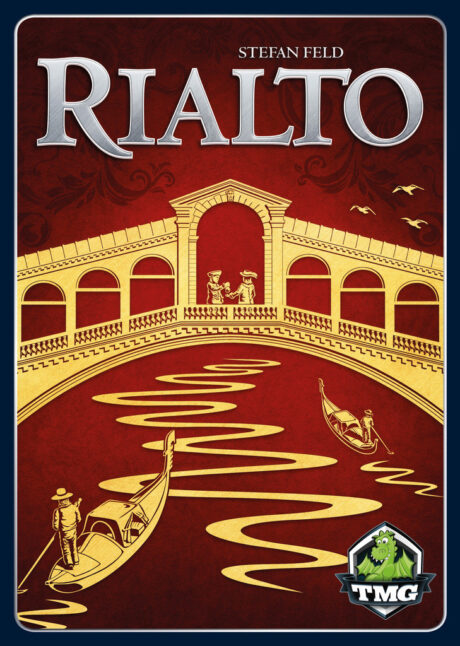
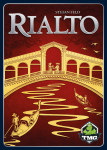
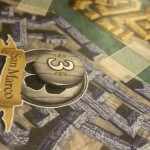
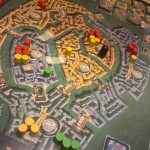


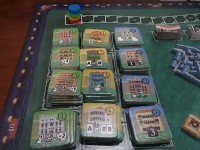
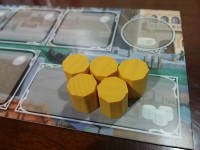

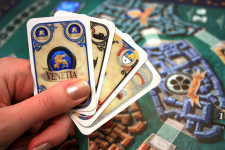
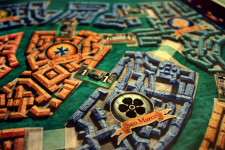



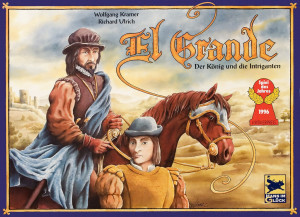
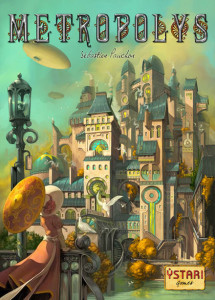
Sam says
I think Rialto is a really nice game. If one player has played it before it can be taught reasonably easily, and unless you have a real ponderer at the table, you can bash through a game quite quickly too. Like Taj Mahal it's got a nice twist on bidding, and you need to keep an eye on what cards your opponent picks up!